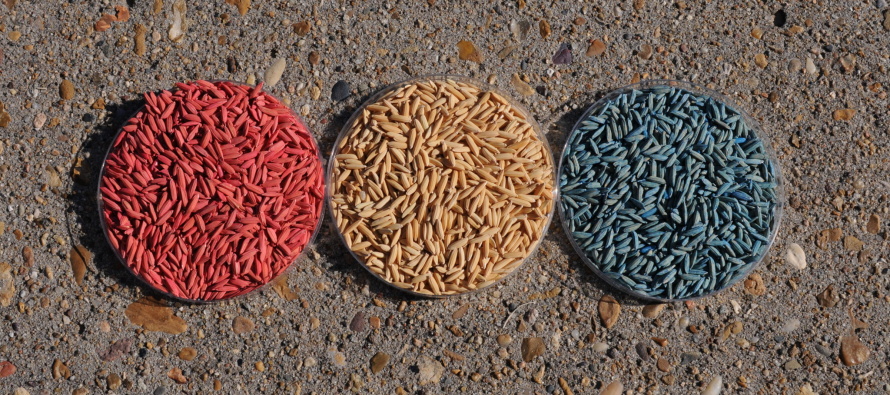Rice Seed Treatments and Cool Wet Soil Conditions

Related Articles
- Rice Variety Trial Results For 2010, Plus Rice Research Report 0
- Rice Seeding Rate Calculator and Chart 0
- Mississippi Cotton Insect Situation of 2010: A Look Back 3
Latest Tweets
Every year we have a point in the planting season where we start getting questions about how heavy rainfall and cool temperatures affect seed treatments in rice. The one thing to remember is that the clock starts ticking on the longevity of the insecticide seed treatment as soon as the seed goes in the ground, not when the plant emerges. Most of our tests with insecticide seed treatments have been under optimal conditions where the plants emerge within about a week after planting. in those situations, the seed treatment provides the best efficacy. When emergence is delayed for more than a week, the efficacy of the insecticide seed treatment can definitely be reduced, especially with the neonicotinoids Cruiser and Nipsit.
Another thing to keep in mind is that we are expecting more out of insecticide seed treatments in rice compared to other crops. In cotton, soybean, and corn, we need the seed treatment to control insects for about 2-3 weeks after plant emergence. While this is also the case for some insects in rice, the primary target is rice water weevil. Rice water weevil does not move into the field and start laying eggs until the flood is established which is 3 weeks or more after plant emergence. As a result, seed treatments need to provide effective control for a longer period of time in rice than in other crops.
So when is the seed treatment likely to be negatively affected by environmental conditions?
This is a difficult question to give a hard definitive answer to, because several other factors can also be at play. We did have a graduate student, Dr. Andrew Adams, look at the impact of flood timing after planting and flushing on the efficacy of insecticide seed treatments in rice. His research showed that the seed treatment provided some control when the flood was delayed to 8 weeks after planting, but it wasn’t the same level of control as when the flood was established at 4 weeks after planting.
The biggest factor that impacted the efficacy of seed treatments was flushing the field. As a result, the heavy rainfall that we have had the last few weeks has likely reduced the efficacy of seed treatments against rice water weevil. More importantly, the combination of delayed plant emergence with heavy rainfall is likely causing a bigger effect on the seed treatments.
Despite the fact that the seed treatments may be compromised, they are still providing enough benefit to justify their use in rice. The seed treatments are important for getting plants off to a good healthy start and will help get the plants to a stage where the field can be flooded sooner. Also, the seed treatment will still provide some control of rice water weevil under these circumstances and in many cases provide better control than a foliar pyrethroid application on untreated rice.
Finally, it is important that we don’t assume that an insecticide seed treatment will always work in rice. As I mentioned previously, we are asking a lot out of the seed treatments in rice, so fields need to continue to be scouted regularly. In most cases, the use of an insecticide seed treatment is going result in an additional 8-10 bushels per acre in rice.
Similarly, it is equally important not to assume that an insecticide seed treatment is not going to work because of environmental conditions. In situations where the rice had delayed emergence combined with heavy rainfall, scout fields closely when they are flooded and make a supplemental application with a pyrethroid when significant adult feeding occurs.




Your message..it means the insecticide seed treatment do not work on environmental changes,
means they are not resistant on the environmental changes
but why do they fail to grow while they are already treated ???